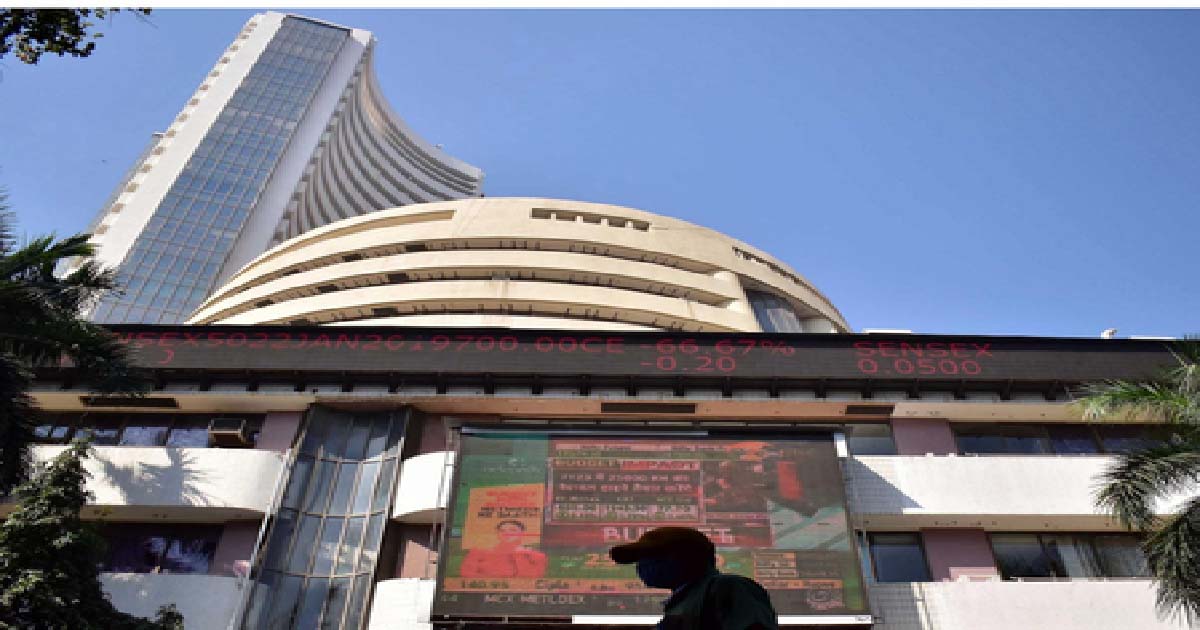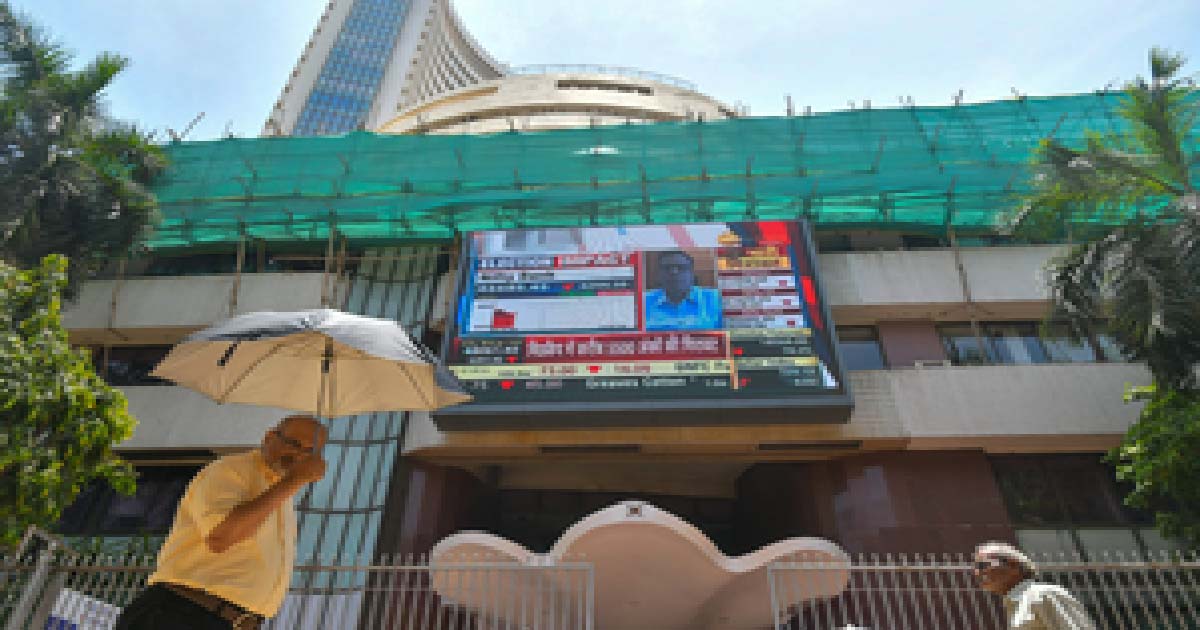Business
US tariffs: India’s tech hardware sector likely to gain over China, Vietnam

New Delhi, April 8: With China facing a 34 per cent US tariff and Vietnam 46 per cent, India’s relatively lower tariff of 27 per cent may shift supply chain dynamics, helping the domestic tech hardware sector grow further, according to a new report.
India’s electronics manufacturing, especially smartphones, are set to gain a competitive edge as the US imposes tariffs on electronics imports from key countries, says a CLSA report.
The shift in the global supply chain could favour India, particularly in the smartphone manufacturing segment, it added.
Smartphones account for $51 billion worth of imports for the US, with China, Vietnam and India being key sources, according to the global broakrage.
Apple and Samsung already have robust manufacturing operations in India.
India’s lower tariff, combined with its large domestic market and increasing backward integration supported by the production-linked incentive (PLI) scheme, enhances its cost competitiveness.
Dixon Technologies is likely to be a key beneficiary of this shift in the global supply chain dynamics.
While Apple and Samsung’s assembly operations are either in-house or with companies not listed in India, Dixon’s role in the supply chain is expected to grow, said CLSA.
According to other reports, the expected direct impact of US reciprocal tariffs would vary in nature for the sectors in India. The impact is expected to be largely neutral for electronics, textiles, agricultural products, chemicals, and automobiles and parts.
In electronics, higher reciprocal tariffs on China would mean a neutral impact for India’s electronics exports, said the report by CareEdge Ratings.
Meanwhile, the recently-announced Rs 22,919 crore Electronics Component Manufacturing Scheme (ECMS), which has the potential to generate nearly 1 lakh direct jobs and several indirect jobs, focuses on the local production of sub-assemblies and bare components like inductors, resistors, PCBs and capacitors, etc.
The scheme envisages to attract investment of Rs 59,350 crore, result in production of Rs 4,56,500 crore and generate additional direct employment of 91,600 people and many indirect jobs as well during its tenure.
There has been five times increase in production over 10 years (17 per cent CAGR) to reach Rs 9.5 lakh crore in 2024, while 25 lakh jobs have been generated.
There has also been six times increase in exports (43 per cent CAGR) to Rs 2.4 lakh crore in 2024. Electronics items are now among India’s top three export items.
Business
Sensex, Nifty open flat as IT and pharma gain

Mumbai, Dec 3: The Indian stock market opened on a quiet note on Wednesday, with both benchmark indices showing minimal movement in early trade.
The Sensex inched up by just 12 points to 85,151, while the Nifty slipped 18 points to 26,014.
Most of the major Sensex stocks were trading in the red, dragging the indices sideways. Shares of HUL, Titan, Tata Motors PV, NTPC, BEL, Trent, Bajaj Finserv, Kotak Bank, Ultratech Cement, Maruti Suzuki, L&T, Power Grid, and ITC were among the top losers in the morning session.
Despite the broader weakness, some heavyweights helped limit the downside. TCS, Infosys, Eternal, HCL Tech, Axis Bank, Tech Mahindra, and Adani Ports were trading higher, providing support to the indices.
In the broader market, mid- and small-cap stocks showed resilience. The Nifty MidCap index managed to rise 0.02 per cent, while the Nifty SmallCap index gained 0.08 per cent after erasing early losses.
Sector-wise, IT and pharma stocks outperformed the market. The Nifty IT index rose 0.7 per cent and the Nifty Pharma index added 0.3 per cent.
These sectors benefited from the Indian Rupee hitting a record low, as many companies in these industries earn a significant part of their revenue in dollars while most of their expenses are in rupees.
On the other hand, PSU bank stocks were under pressure, with the Nifty PSU Bank index falling 0.6 per cent in early trade.
Analysts said that the market remained range-bound as mixed global cues and a weak currency influenced investor sentiment.
“The ideal strategy for investors in this period of uncertainty is to remain invested in high quality growth stocks in the large and midcap segments. Smallcaps, as a segment, continues to be overvalued and are, therefore, best avoided,” market watchers added.
Business
Sensex, Nifty recover from early fall as profit booking keeps markets volatile

Mumbai, Dec 2: Indian stock markets opened with a sharp gap-down on Tuesday but soon recovered some losses as investors continued to book profits after the recent rally.
The Sensex was trading at around 85,508, down 134 points or 0.16 per cent, while the Nifty slipped 31 points or 0.12 per cent to 26,145.
“The Nifty’s positional trend remains bullish, with strong support at the 26000-26050 zone. On the higher side, 26300 could offer resistance on a closing basis,” market watchers added.
Heavyweights such as HDFC Bank, ICICI Bank, Ultratech Cement, Axis Bank, Bajaj Finserv, Tata Steel, Tata Motors PV, Titan Company and Power Grid dragged the indices lower.
Eternal also remained under pressure during the early trade.
However, selective buying in stocks like Asian Paints, Infosys, Bharti Airtel, Bajaj Finance, SBI, Maruti Suzuki, NTPC, HUL, and L&T helped the Sensex limit its losses and attempt a mild recovery.
In the broader market space, the Nifty MidCap index edged up 0.27 per cent, indicating some buying interest in mid-sized companies. On the other hand, the Nifty SmallCap index slipped 0.12 per cent.
Sector-wise, financial stocks were among the worst performers, with the Nifty Financial Services index falling 0.7 per cent and the Nifty Bank index dropping 0.4 per cent.
Meanwhile, the Nifty PSU Bank index gained 0.9 per cent, emerging as the top performer, followed by the Nifty Auto index, which rose 0.4 per cent.
Analysts said that markets remained volatile as traders continued to take profits amid mixed global cues.
“Investors can use the current period of consolidation to slowly accumulate fairly-valued largecaps and growth-oriented midcaps which will lead the next leg of rally in the market,” analysts stated.
The Smallcap segment continues to be over-valued. The Bank Nifty, despite the recent run up, have the potential to impart resilience to the market since there is valuation comfort in this segment. The pick up in credit growth is another positive for the segment.
Business
Gross enrolment under Atal Pension Yojana surpasses 8.34 crore: FM Sitharaman

New Delhi, Dec 1: Gross enrolment under the Atal Pension Yojana (APY), a bid to create a universal social security system for all, especially the poor, the under-privileged and the workers in the unorganised sector, has reached 8,34,13,738 (as on October 31), the Parliament was informed on Monday.
APY was launched in 2015 with the objective of creating a universal social security system for all Indians. It is open to all citizens of India between 18 and 40 years of age who have a savings account in a bank or post office.
As per the Scheme, the subscriber will receive pension benefits on attaining the age of 60 years.
“Hence, the pension benefit under APY is expected to start from 2035 onwards. However, the gross enrolment under Atal Pension Yojana as on 31.10.2025 is 8,34,13,738,” Finance Minister Nirmala Sitharaman told the Lok Sabha in a written reply to a question.
As on October 31, the female gross enrolment under APY is 4,04,41,135, which is 48 per cent of the total enrolment, she noted.
Further, in Bihar, the female gross enrolment under APY is 42,07,233, which is 57 per cent of the total enrolment in the state.
“As on 31.10.2025, a total of 7,153 Bank branches and 461 Post Office branches are enrolling people into APY in Bihar,” the Finance Minister stated.
The government and the Pension Fund Regulatory and Development Authority (PFRDA) have taken several steps to increase awareness and coverage of APY across the country, including rural and remote areas of Bihar.
These include periodic advertisements; APY Subscribers Information Brochure in 13 vernacular languages; and virtual capacity building programmes for Banking Correspondents (BCs) and field staff of Banks, Self Help Group (SHG) members, and bank-sakhis of State Rural Livelihoods Missions (SRLMs).
During the last five years, such programmes have been conducted across various districts of Bihar, including in Muzaffarpur, Patna, Bhojpur, and Nalanda.
Recently, financial inclusion campaigns for pension saturation were organised pan-India India including 8,093 such campaigns in Bihar, said Sitharaman.
-

 Crime3 years ago
Crime3 years agoClass 10 student jumps to death in Jaipur
-

 Maharashtra1 year ago
Maharashtra1 year agoMumbai Local Train Update: Central Railway’s New Timetable Comes Into Effect; Check Full List Of Revised Timings & Stations
-

 Maharashtra1 year ago
Maharashtra1 year agoMumbai To Go Toll-Free Tonight! Maharashtra Govt Announces Complete Toll Waiver For Light Motor Vehicles At All 5 Entry Points Of City
-

 Maharashtra1 year ago
Maharashtra1 year agoFalse photo of Imtiaz Jaleel’s rally, exposing the fooling conspiracy
-

 National News1 year ago
National News1 year agoMinistry of Railways rolls out Special Drive 4.0 with focus on digitisation, cleanliness, inclusiveness and grievance redressal
-

 Maharashtra1 year ago
Maharashtra1 year agoMaharashtra Elections 2024: Mumbai Metro & BEST Services Extended Till Midnight On Voting Day
-

 National News1 year ago
National News1 year agoJ&K: 4 Jawans Killed, 28 Injured After Bus Carrying BSF Personnel For Poll Duty Falls Into Gorge In Budgam; Terrifying Visuals Surface
-

 Crime1 year ago
Crime1 year agoBaba Siddique Murder: Mumbai Police Unable To Get Lawrence Bishnoi Custody Due To Home Ministry Order, Says Report












